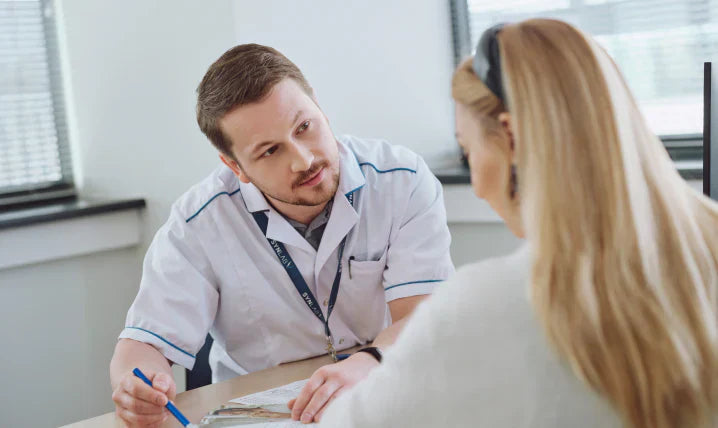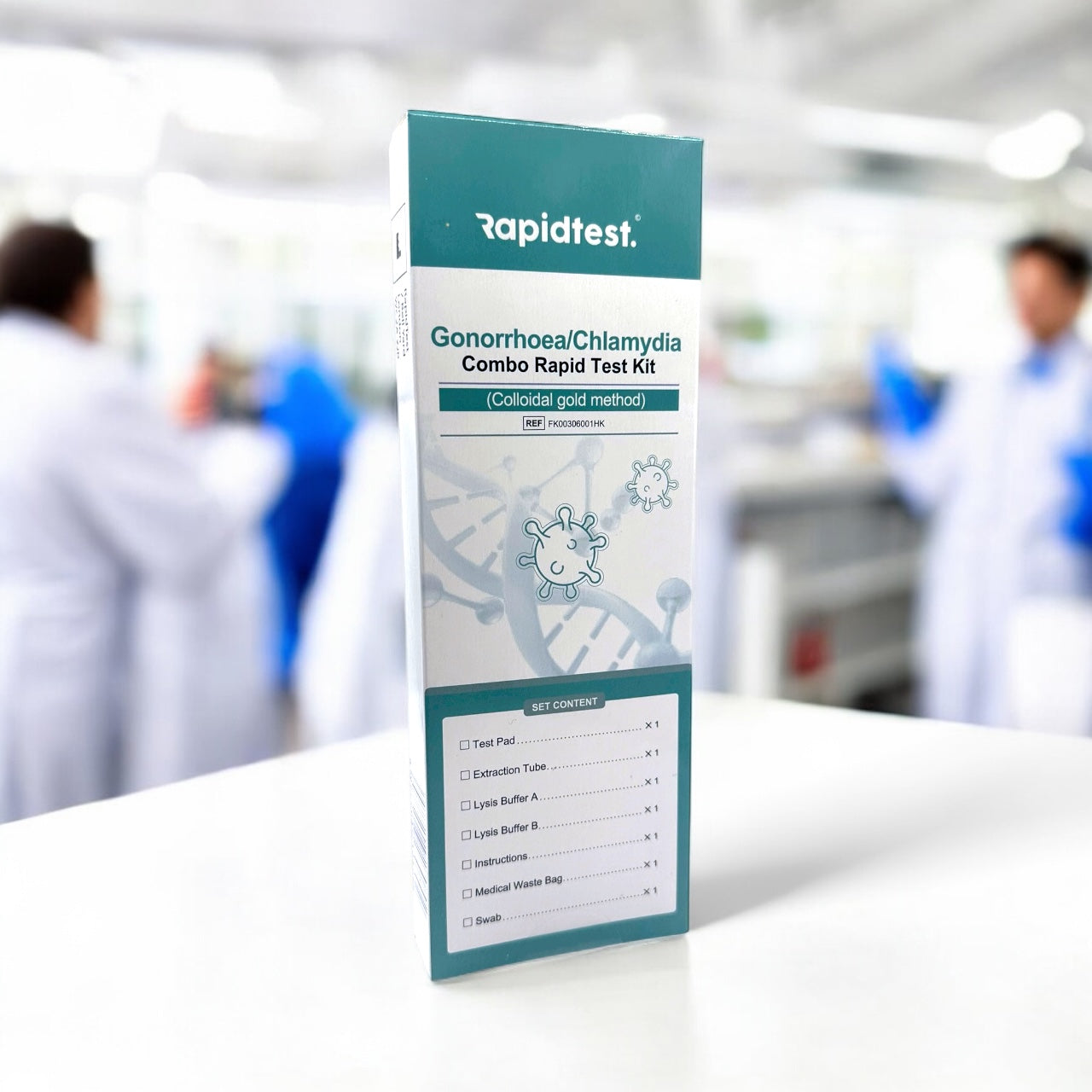
🦠 Can You Have Gonorrhea and Chlamydia at the Same Time? Here’s What You Need to Know
Share
🧠 Overview
You might be surprised to learn that it’s possible — and quite common — to have gonorrhea and chlamydia at the same time. In fact, medical studies show that more than 30–50% of people who test positive for gonorrhea also test positive for chlamydia.
Both infections spread the same way — through unprotected sex — and share many of the same symptoms. Because they often occur together, many people only find out they have both when tested through a comprehensive STI panel.
The good news? Both are curable, and early testing makes treatment simple, fast, and effective.
🔬 How Co-Infection Happens
Chlamydia and gonorrhea are both caused by bacteria — Chlamydia trachomatis and Neisseria gonorrhoeae, respectively. They’re transmitted through the same sexual activities: vaginal, anal, and oral sex with an infected partner.
Because they infect similar tissues in the genital tract, it’s easy for both bacteria to take hold at once if exposure occurs.
Unprotected sex, multiple partners, or a recent new partner are the most common risk factors. If one partner has either infection, there’s a strong chance both may be present — even if symptoms differ.
⚠️ Shared and Overlapping Symptoms
Both infections can cause discomfort, discharge, or pain when urinating — but not everyone experiences symptoms.
Here’s how they compare:
|
Symptom |
Chlamydia |
Gonorrhea |
|
Pain when urinating |
✅ Common |
✅ Common |
|
Discharge (penile or vaginal) |
✅ Clear or cloudy |
✅ Yellow or green |
|
Pelvic or lower abdominal pain |
✅ Possible |
✅ Possible |
|
Pain during sex |
✅ Sometimes |
✅ Sometimes |
|
Sore throat (oral infection) |
⚪ Rare |
✅ More likely |
|
Eye irritation (if infected by touch) |
✅ Possible |
✅ Possible |
|
Often symptomless |
✅ Yes |
✅ Yes (esp. women) |
Because the symptoms overlap, testing is the only reliable way to know whether you have one or both infections.
Internal link:
→ STI Symptoms by Gender Infographic
🧪 Testing for Gonorrhea and Chlamydia Together
The easiest and most accurate way to test for both infections is with a combined STI rapid test.
🏠 At-Home Combo Test Kits
RapidTest.co’s Comprehensive STI Test Kit checks for multiple infections — including:
- Gonorrhea
- Chlamydia
- Syphilis
-
HIV
It uses the same professional diagnostic technology found in clinics, delivering results in just 15 minutes from the privacy of your home.
✅ CE-marked & ISO-certified
✅ Simple swab or finger-prick test
✅ Discreet, unbranded packaging
✅ Results you can trust
→ How to Use a Gonorrhea Rapid Test
💊 Treatment for Co-Infection
Both infections are treated with antibiotics — often together.
In most cases, healthcare professionals prescribe a dual therapy to target both bacteria at once.
Treatment usually includes:
- A single injection (often for gonorrhea)
-
A short antibiotic course (for chlamydia)
It’s important to avoid sex until you and your partner(s) have completed treatment and retested negative.
After finishing antibiotics, retest after 2–3 weeks to ensure the infection has cleared.
→ When Should You Retest After an STI?
💬 What If You’re Symptom-Free?
Most people with chlamydia or gonorrhea don’t have any symptoms. That’s why experts recommend testing after every new sexual partner — even if you feel perfectly healthy.
Testing early prevents complications like:
- Pelvic inflammatory disease (PID)
- Infertility in men and women
- Testicular or pelvic pain
-
Increased HIV risk
Regular testing helps you catch infections before they cause long-term harm or spread to others.
→ Can You Have Gonorrhea Without Knowing It?
🔁 Why Combo Testing Is the Smartest Option
Instead of testing for each STI separately, combo testing gives:
-
Comprehensive coverage (detects the most common STIs at once)
-
Faster results (15 minutes for up to 4 infections)
-
Cost savings compared to buying individual kits
-
Peace of mind knowing you’ve checked all major risks
Whether you’ve had unprotected sex or just want reassurance, a Comprehensive STI Panel is the best choice.
💬 FAQs
Q1. Can you have chlamydia and gonorrhea at the same time?
Yes. Co-infection is common because both infections spread the same way.
Q2. Can one test detect both infections?
Yes. RapidTest.co’s STI Combo Kit detects gonorrhea and chlamydia, and our full STI MOT test also includes syphilis, and HIV too.
Q3. Are both infections curable?
Yes. Both gonorrhea and chlamydia are curable with antibiotics prescribed by a doctor.
Q4. How soon should I test after exposure?
The most accurate results come from testing 7–14 days after unprotected sex.
Q5. What happens if you don’t treat them?
Untreated infections can lead to pelvic inflammatory disease, infertility, and increased HIV risk.
✅ Takeaway: One Test, Complete Peace of Mind
Gonorrhea and chlamydia often occur together — but both are easy to detect, treat, and cure. Testing regularly protects your health, your partner’s health, and gives you the confidence of knowing your status.
With RapidTest.co’s CE-certified STI Combo Test Kit, you can check for both infections at once — from the privacy of your home — and get results in just 15 minutes.
🛒 Shop STI Combo Test Kit – 15-Minute Results
📘 Learn More About Gonorrhea Testing
📘 Learn More About Chlamydia Testing

